Analysis of Voltage Variation in Silicon Carbide MOSFETs during Turn-On and Turn-Off
Abstract
:1. Introduction
2. Model
2.1. Overview of the Turn-On and Turn-Off Process
2.2. Temperature-Based dVDS/dt Model
2.3. Dependency Analysis
3. Experiment Details
4. Experimental Results
4.1. Static Characteristics under Different Temperatures
4.2. Temperature Dependency of dVDS/dt
5. Discussion
6. Conclusions
Acknowledgments
Author Contributions
Conflicts of Interest
References
- Hudgins, J. Power electronic devices in the future. IEEE J. Emerg. Sel. Top. Power Electron. 2013, 1, 11–17. [Google Scholar] [CrossRef]
- Jiang, D.; Burgos, R.; Wang, F.; Boroyevich, D. Temperature dependent characteristics of SiC devices: Performance evaluation and loss calculation. IEEE Trans. Power Electron. 2012, 27, 1013–1024. [Google Scholar] [CrossRef]
- Millan, J.; Godignon, P.; Perpina, X.; Perez-Tomas, A.; Rebollo, J. A survey of wide bandgap power semiconductor devices. IEEE Trans. Power Electron. 2014, 29, 2155–2163. [Google Scholar] [CrossRef]
- Zhu, P.; Wang, L.; Ruan, L.G.; Zhang, J.F. Temperature Effects on Performance of SiC Power Transistors (SiC JFET and SiC MOSFET). In Proceedings of the 2015 IEEE European Conference on Power Electronics and Applications (EPE’15 ECCE-Europe), Geneva, Switzerland, 8–10 September 2015; pp. 449–454. [Google Scholar]
- Lelis, A.J.; Habersat, D.; Green, R.; Ogunniyi, A.; Gurfinkel, M.; Suehle, J.; Goldsman, N. Time dependence of bias-stress-induced SiC MOSFET threshold voltage instability measurements. IEEE Trans. Power Electron. 2008, 55, 1835–1840. [Google Scholar] [CrossRef]
- Gurfinkel, M.; Xiong, H.D.; Cheung, K.P.; Suehle, J.S.; Bernstein, J.B.; Shapira, Y.; Lelis, A.J.; Habersat, D.; Goldsman, N. Characterization of transient gate oxide trapping in SiC MOSFETs using fast I-V techniques. IEEE Trans. Power Electron. 2008, 55, 2004–2012. [Google Scholar] [CrossRef]
- Chen, Z.; Boroyevich, D.; Burgos, R.; Wang, F. Characterization and modeling of 1.2 kV, 20 A SiC MOSFETs. In Proceedings of the 2009 IEEE Energy Conversion Congress and Exposition (ECCE), San Jose, CA, USA, 20–24 September 2009; pp. 1480–1487. [Google Scholar]
- Hull, B.; Das, M.; Husna, F.; Callanan, R.; Agarwal, A.; Palmour, J. 20 A, 1200 V 4H-SiC DMOSFETs for Energy Conversion Systems. In Proceedings of the 2009 IEEE Energy Conversion Congress and Exposition (ECCE), San Jose, CA, USA, 20–24 September 2009; pp. 112–119. [Google Scholar]
- Chen, Z.; Yao, Y.Y.; Danilovic, M.; Boroyevich, D. Performance Evaluation of SiC Power MOSFETs for High-Temperature Applications. In Proceedings of the 2012 IEEE Power Electronics and Motion Control Conference (EPE/PEMC), Novi Sad, Serbia, 4–5 September 2012; pp. DS1a.8-1–DS1a.8-9. [Google Scholar]
- Chen, Z.; Yao, Y.Y.; Boroyevich, D.; Ngo, K.D.T.; Mattavelli, P.; Rajashekara, K. A 1200-V, 60-A SiC MOSFET Multichip Phase-Leg Module for High-Temperature, High-Frequency Applications. IEEE Trans. Power Electron. 2014, 29, 2307–2320. [Google Scholar] [CrossRef]
- Othman, D.; Berkani, M.; Lefebvre, S.; Ibrahim, A.; Khatir, Z.; Bouzourene, A. Comparison study on performances and robustness between SiC MOSFET & JFET devices—Abilities for aeronautics application. Microelectron. Reliab. 2012, 52, 1859–1864. [Google Scholar]
- Takao, K.; Harada, S.; Shinohe, T.; Ohashi, H. Performance evaluation of all SiC power converters for realizing high power density of 50 W/cm3. In Proceedings of the 2010 IEEE International Power Electronics Conference (IPEC), Sapporo, Japan, 21–24 June 2010; pp. 2128–2134. [Google Scholar]
- Cui, Y.T.; Chinthavali, M.; Tolbert, L.M. Temperature Dependent Pspice Model of Silicon Carbide Power MOSFET. In Proceedings of the 2012 IEEE Applied Power Electronics Conference and Exposition (APEC), Orlando, FL, USA, 5–9 February 2012; pp. 1698–1704. [Google Scholar]
- DiMarino, C.; Chen, Z.; Danilovic, M.; Boroyevich, D.; Burgos, R.; Mattavelli, P. High-Temperature Characterization and Comparison of 1.2 kV SiC Power MOSFETs. In Proceedings of the 2013 IEEE Energy Conversion Congress and Exposition (ECCE), Denver, CO, USA, 15–19 September 2013; pp. 3235–3242. [Google Scholar]
- Avenas, Y.; Dupont, L.; Khatir, Z. Temperature measurement of power semiconductor devices by thermo-sensitive electrical parameters—A review. IEEE Trans. Power Electron. 2012, 27, 2081–3092. [Google Scholar] [CrossRef]
- Sundaramoorthy, V.K.; Bianda, E.; Bloch, R.; Angelosante, D.; Nistor, I.; Riedel, G.J.; Zurfluh, F.; Knapp, G.; Heinemann, A. A study on IGBT junction temperature (Tj) online estimation using gate-emitter voltage (Vge) at turn-off. Microelectron. Reliab. 2014, 54, 2423–2431. [Google Scholar] [CrossRef]
- Wang, J.J.; Chung, H.S.-h.; Li, R.T.-h. Characterization and Experimental Assessment of the Effects of Parasitic Elements on the MOSFET Switching Performance. IEEE Trans. Power Electron. 2013, 28, 573–589. [Google Scholar] [CrossRef]
- Yin, S.; Tu, P.F.; Wang, P.; Tseng, K.J.; Qi, C.; Hu, X.L.; Zagrodnik, M.; Simanjorang, R. An Accurate Subcircuit Model of SiC Half-Bridge Module for Switching-Loss Optimization. IEEE Trans. Ind. Appl. 2017, 53, 3840–3849. [Google Scholar] [CrossRef]
- Arribas, A.P.; Shang, F.; Krishnamurthy, M.; Shenai, K. Simple and Accurate Circuit Simulation Model for SiC Power MOSFETs. IEEE Trans. Electron. Devices 2015, 62, 449–457. [Google Scholar] [CrossRef]
- Chen, K.; Zhao, Z.G.; Yuan, L.Q.; Lu, T.; He, F. The Impact of Nonlinear Junction Capacitance on Switching Transient and Its Modeling for SiC MOSFET. IEEE Trans. Electron Devices 2015, 62, 333–338. [Google Scholar] [CrossRef]
- McNutt, T.R.; Hefner, A.R.; Mantooth, H.A.; Berning, D.; Ryu, S.H. Silicon carbide power MOSFET model and parameter extraction sequence. IEEE Trans. Power Electron. 2007, 22, 353–363. [Google Scholar] [CrossRef]
- Mudholkar, M.; Ahmed, S.; Ericson, M.N.; Frank, S.S.; Britton, C.L.; Mantooth, H.A. Datasheet Driven Silicon Carbide Power MOSFET Model. IEEE Trans. Power Electron. 2014, 29, 2220–2228. [Google Scholar] [CrossRef]
- Baliga, B.J. Fundamentals of Power Semiconductor Devices; Spring-Verlag: New York, NY, USA, 2008. [Google Scholar]
- Hasanuzzaman, M.; Islam, S.K.; Tolbert, L.M.; Alam, M.T. Temperature dependency of MOSFET device characteristics in 4H- and 6H-silicon carbide (SiC). Solid-State Electron. 2004, 48, 1877–1881. [Google Scholar] [CrossRef]
- Bryant, A.; Yang, S.Y.; Mawby, P.; Xiang, D.; Ran, L.; Tavner, P.; Palmer, P.R. Investigation Into IGBT dV/dt During Turn-Off and Its Temperature Dependence. IEEE Trans. Power Electron. 2011, 26, 3019–3031. [Google Scholar] [CrossRef] [Green Version]
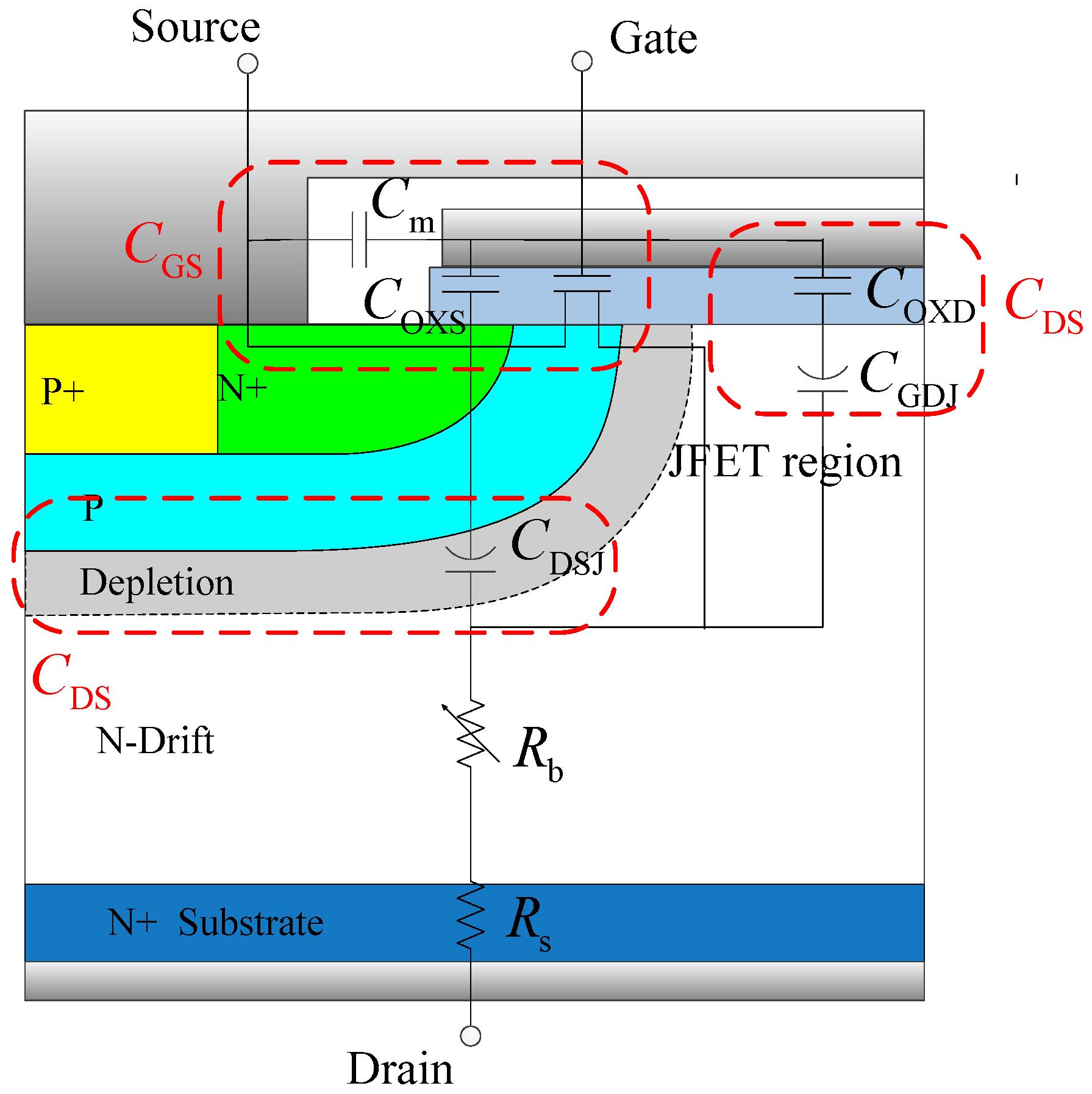
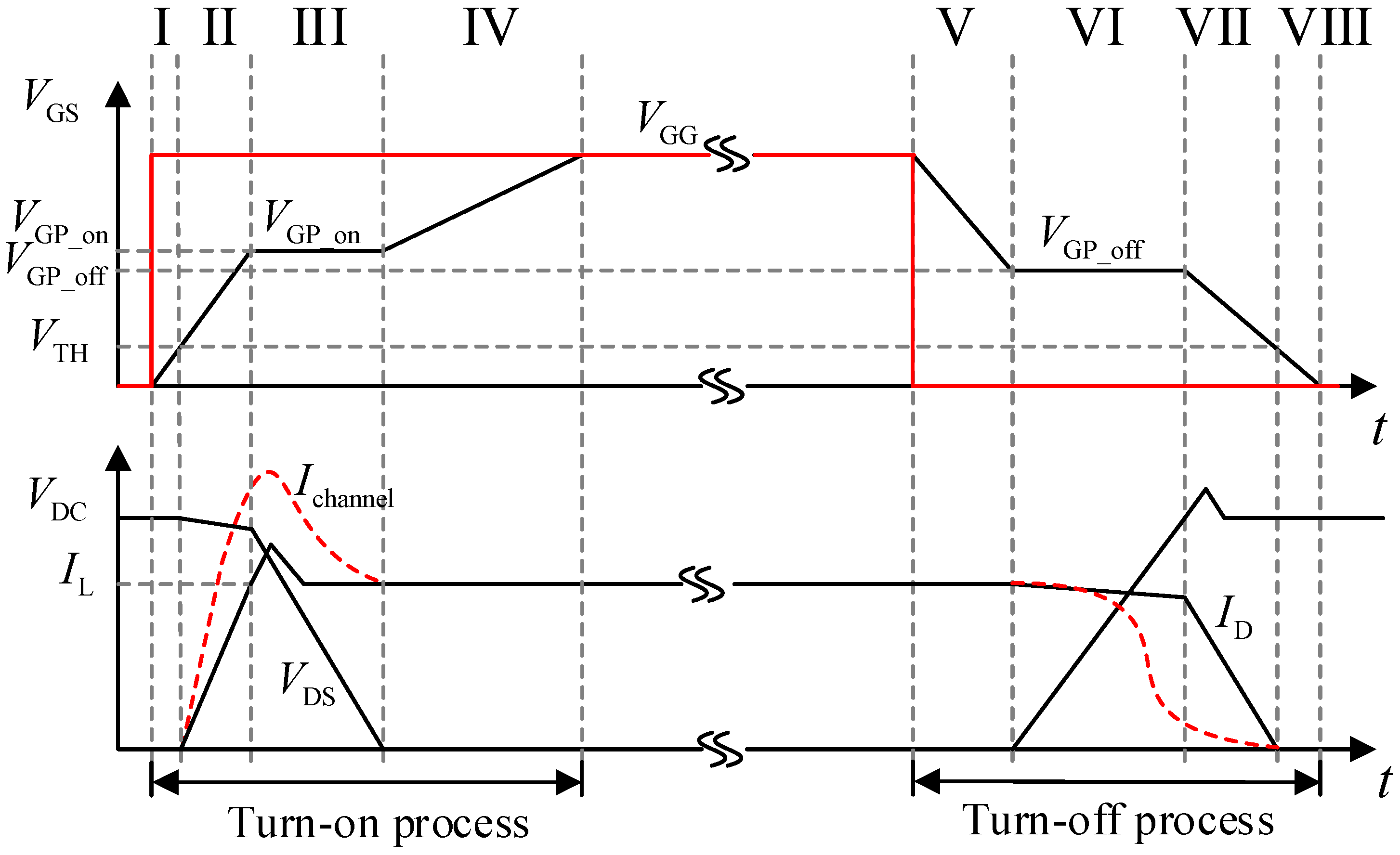
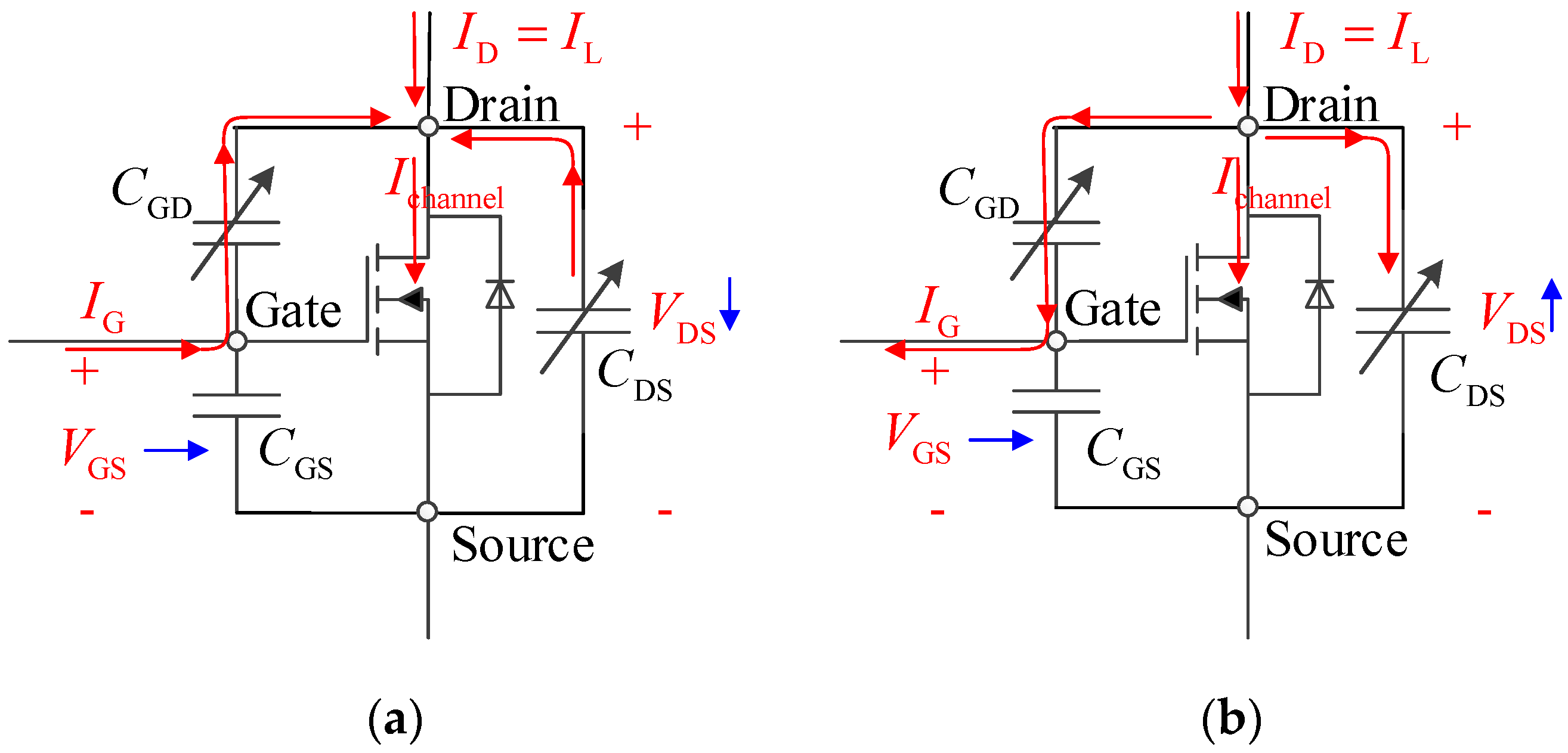
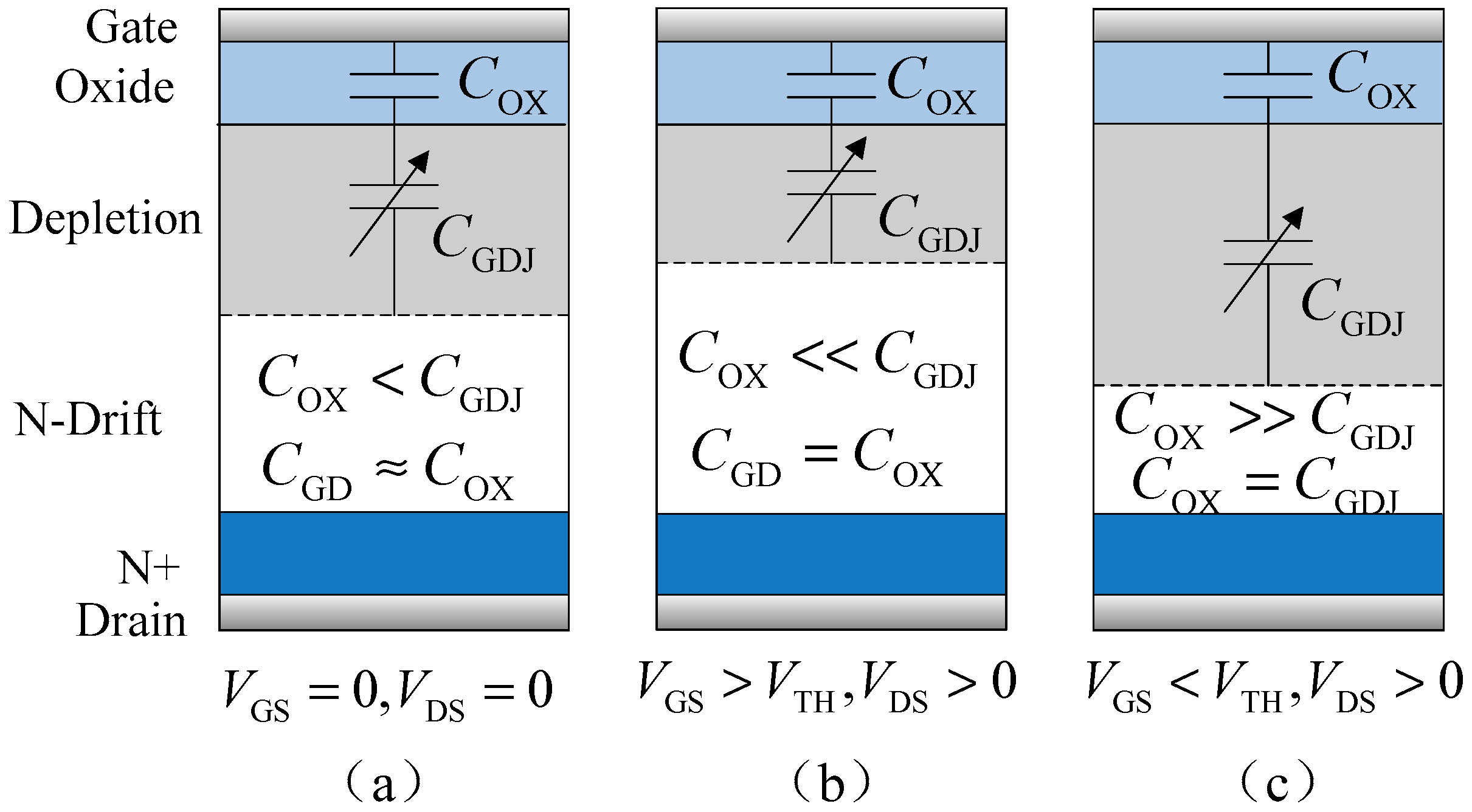



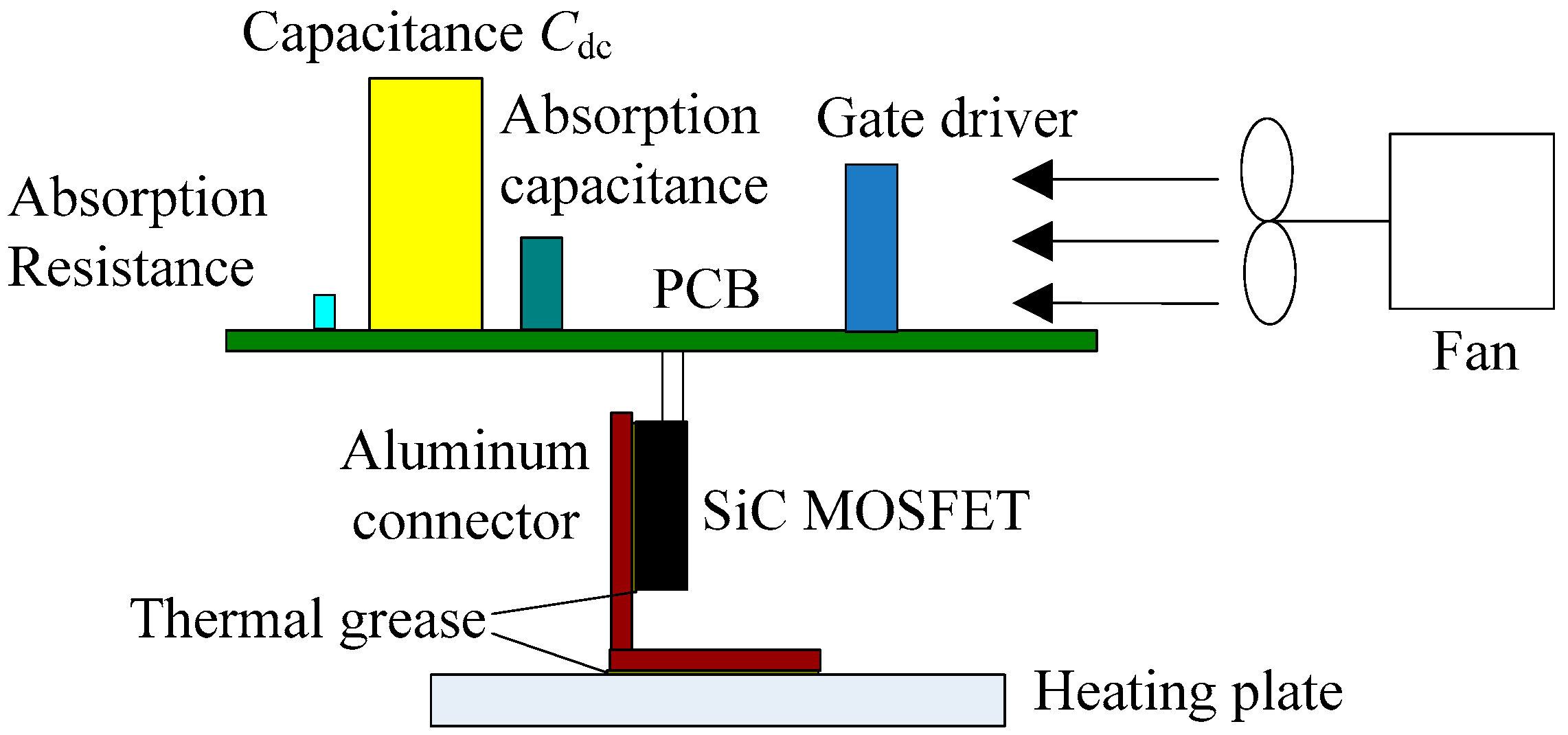
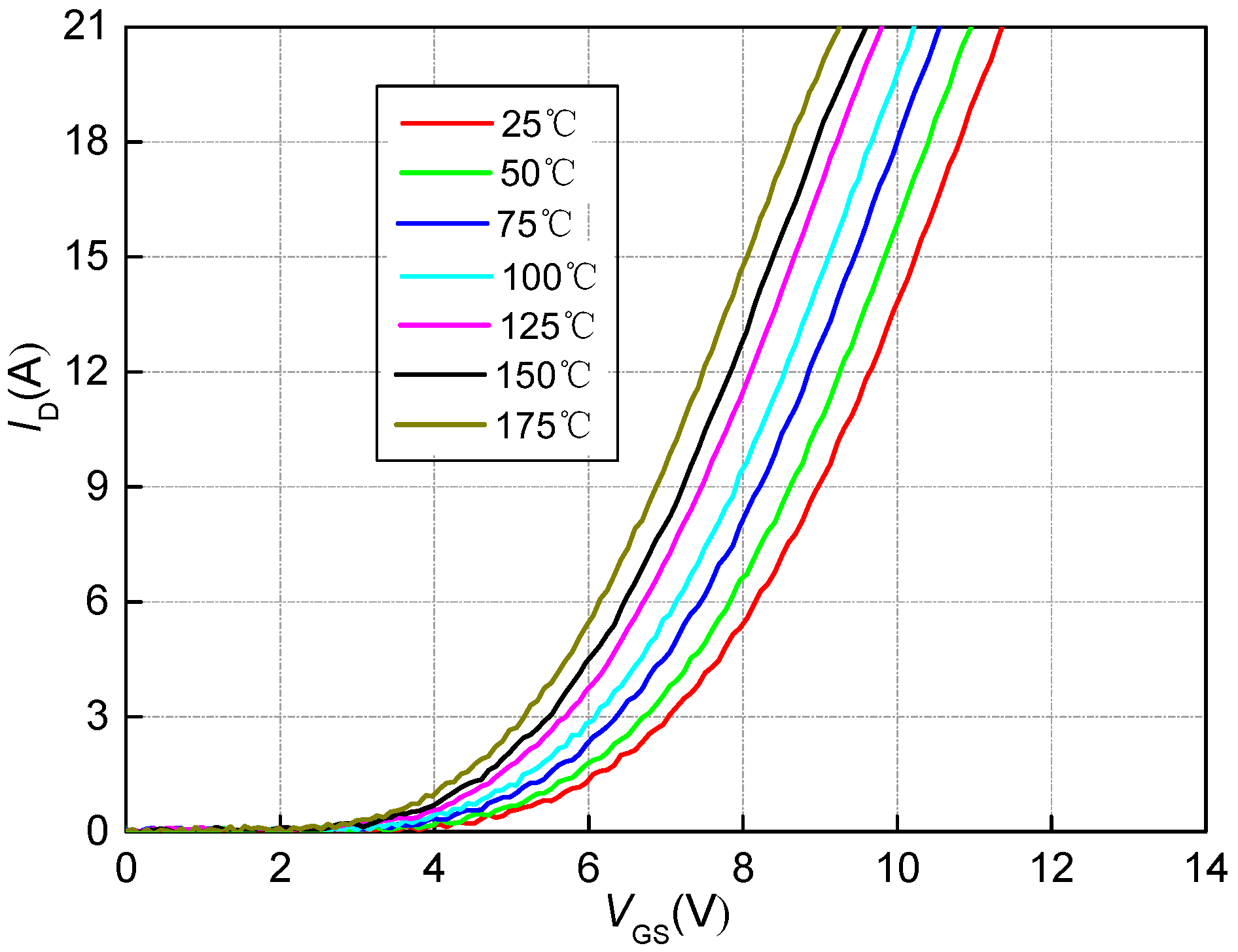
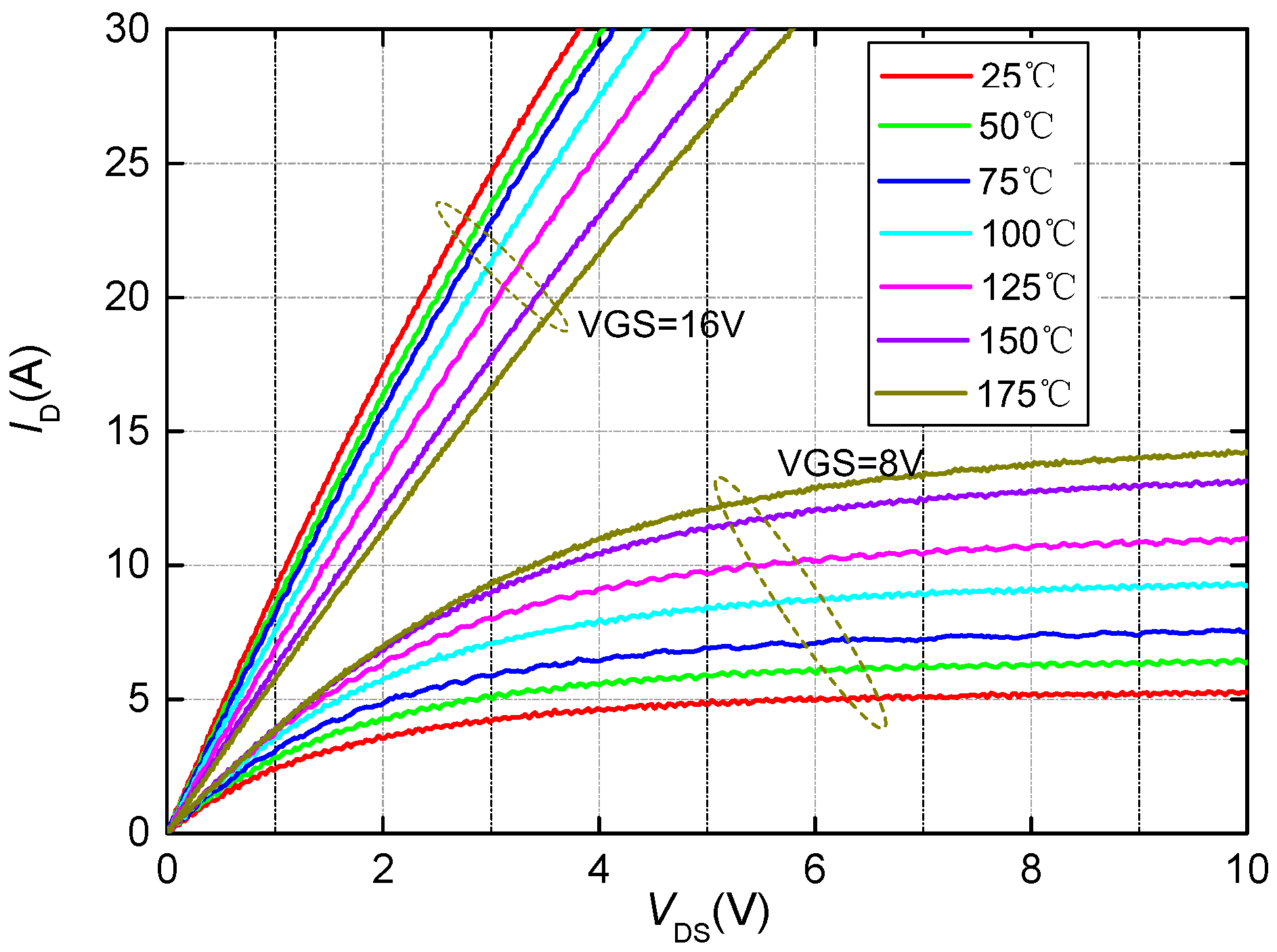
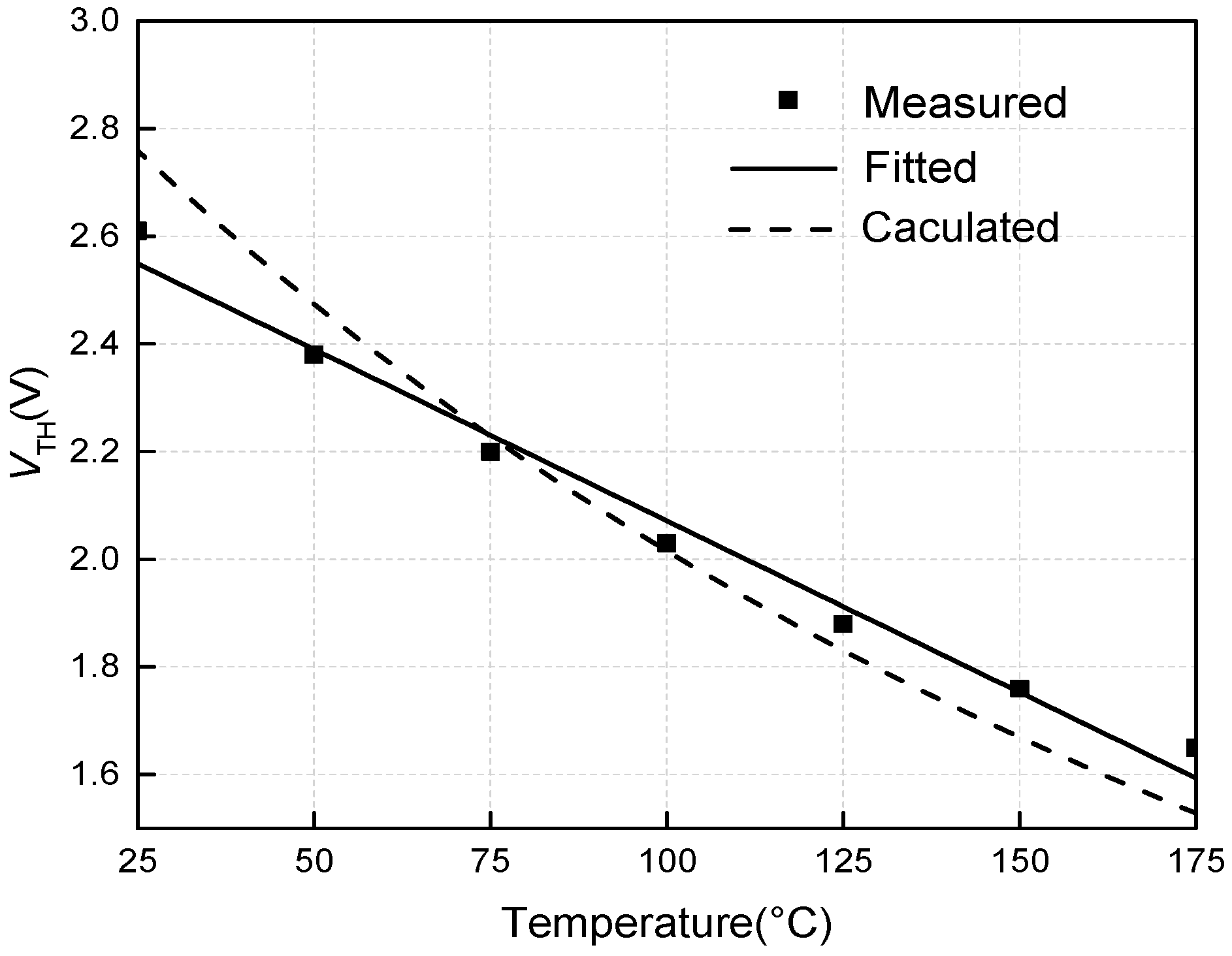
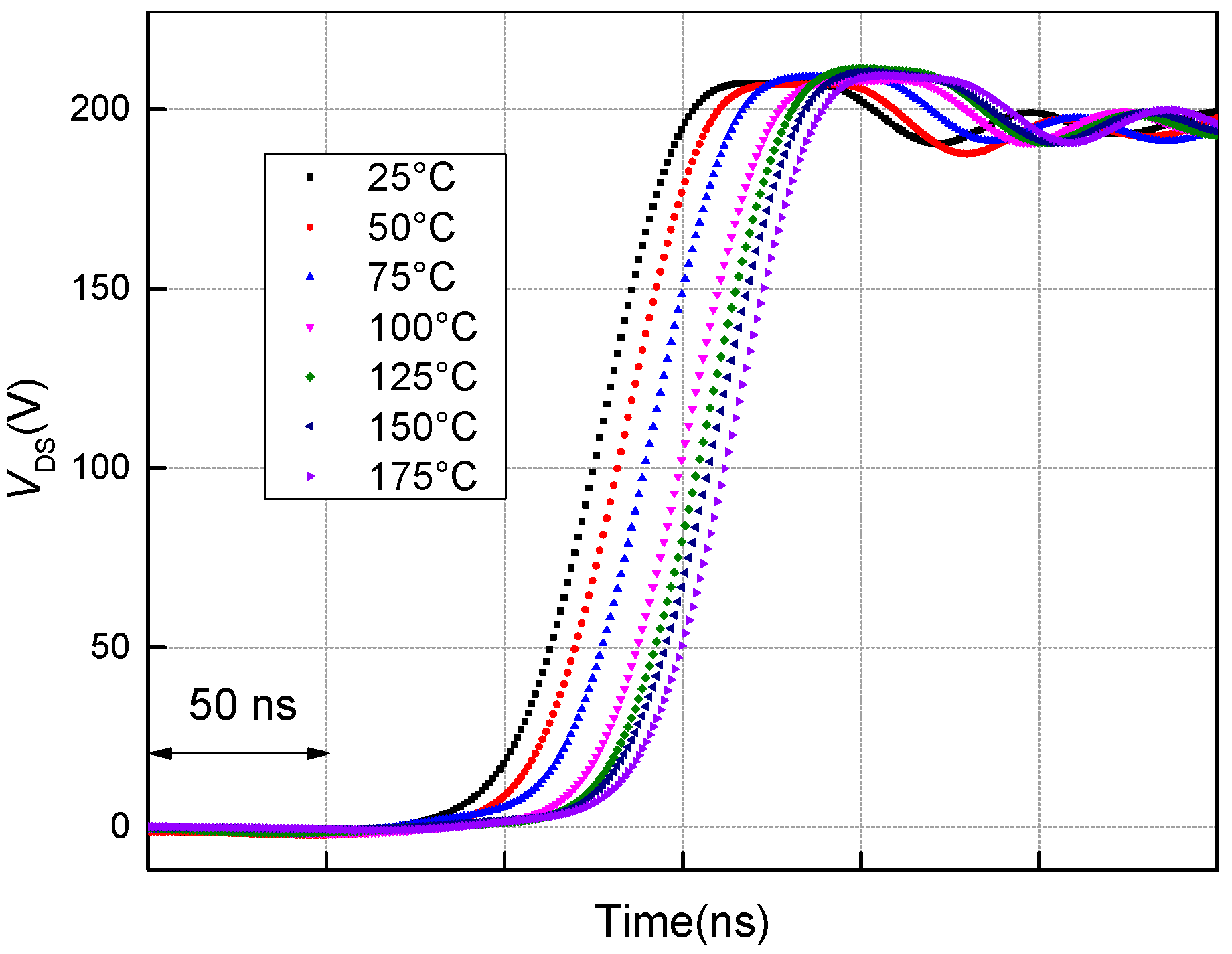

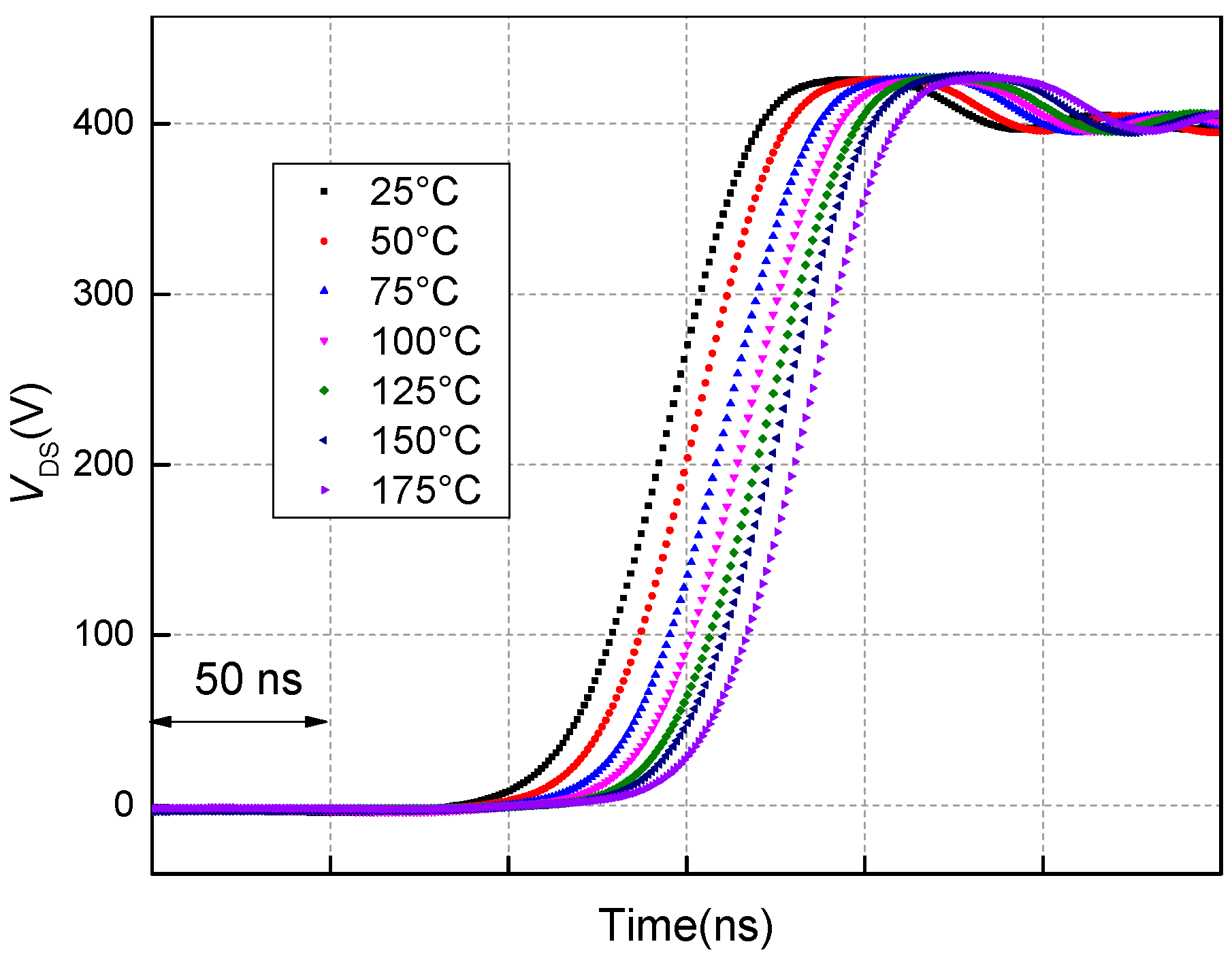

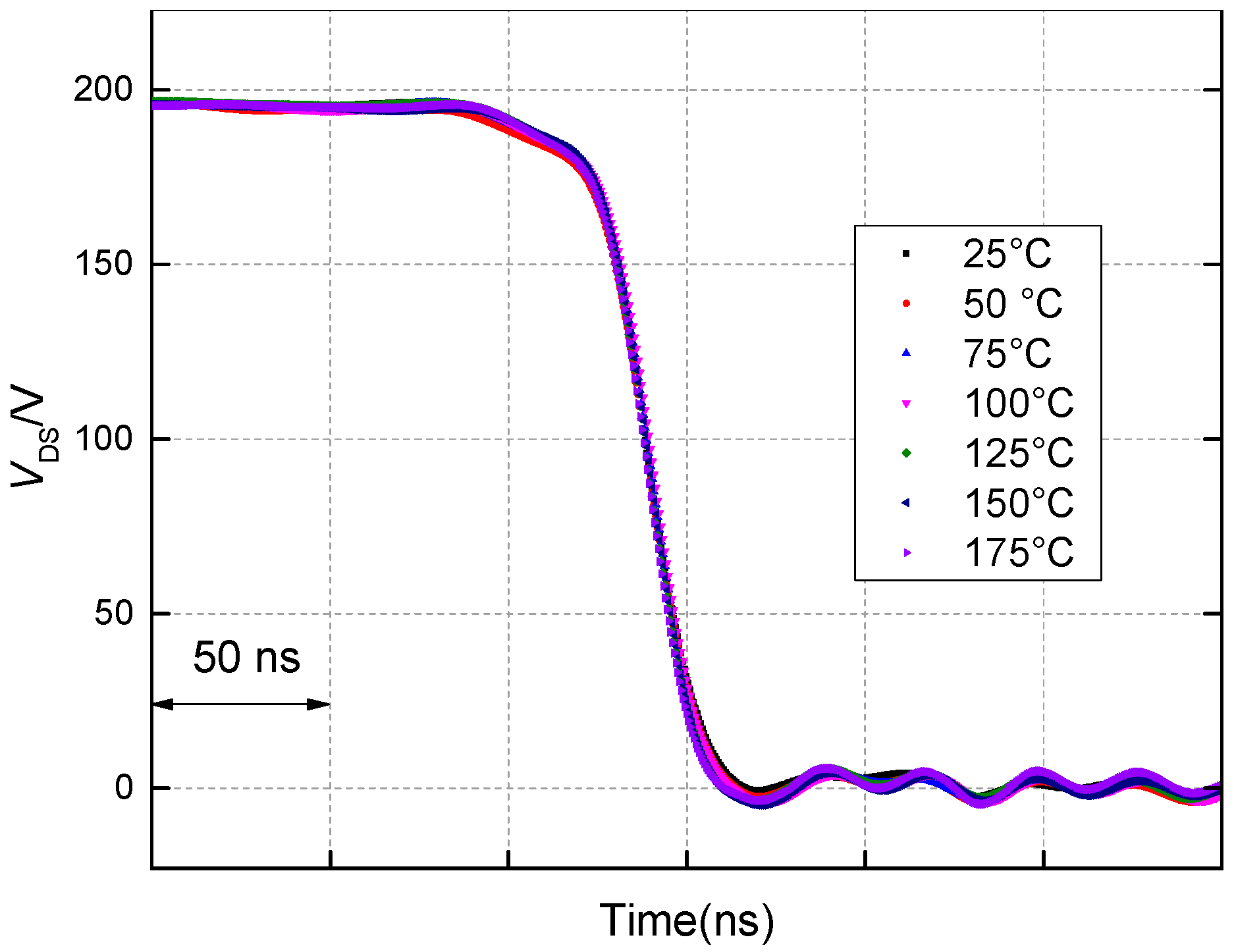


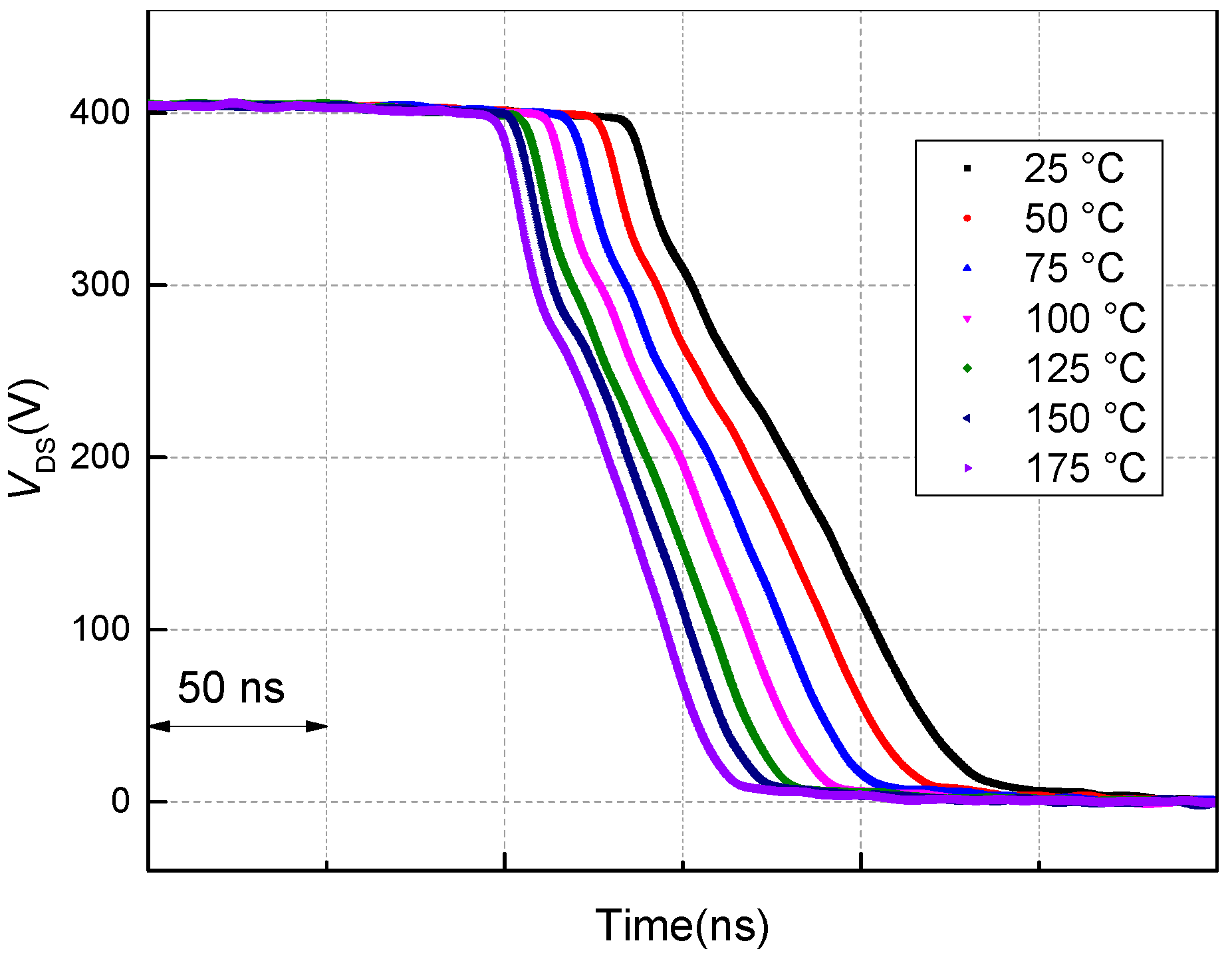
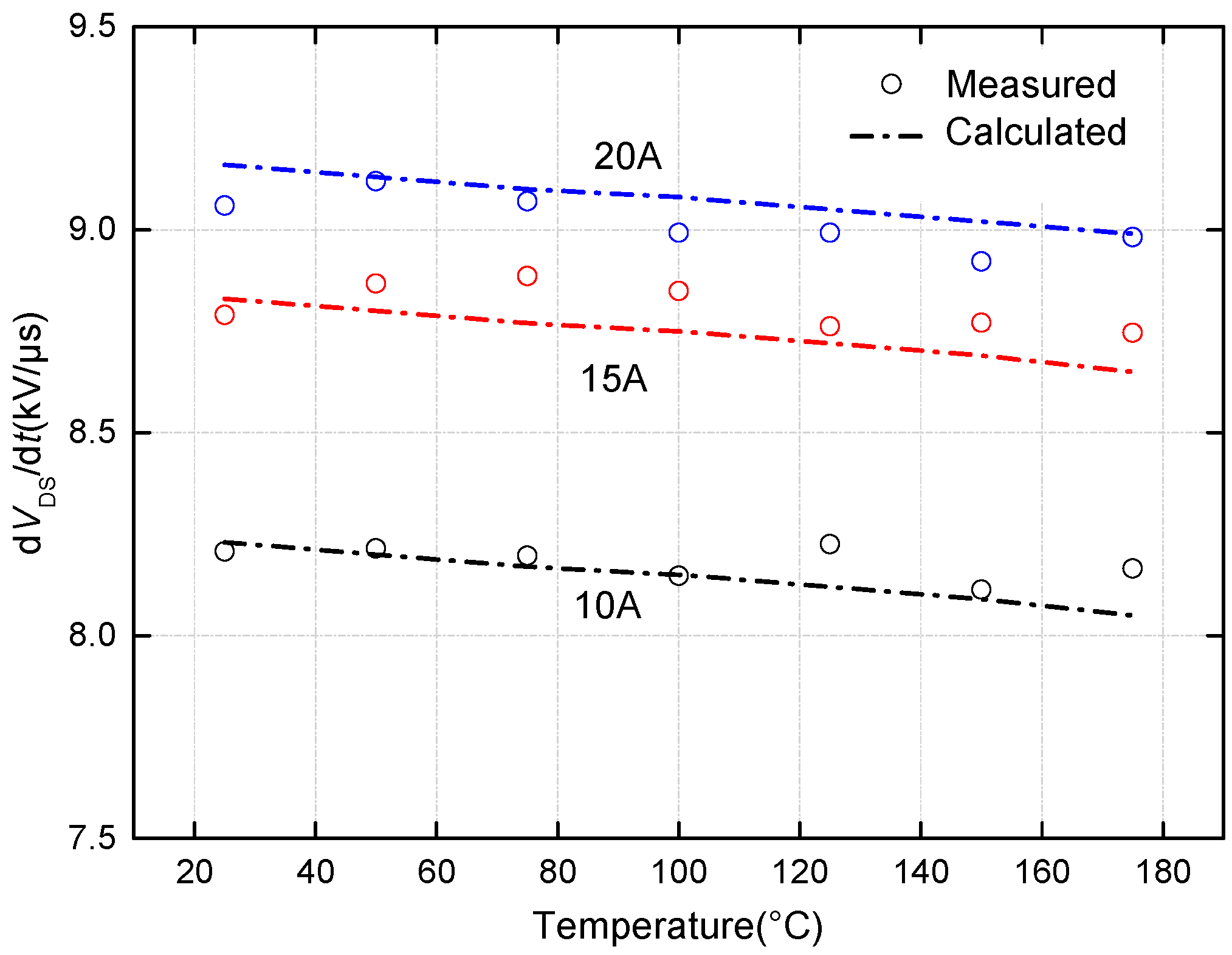
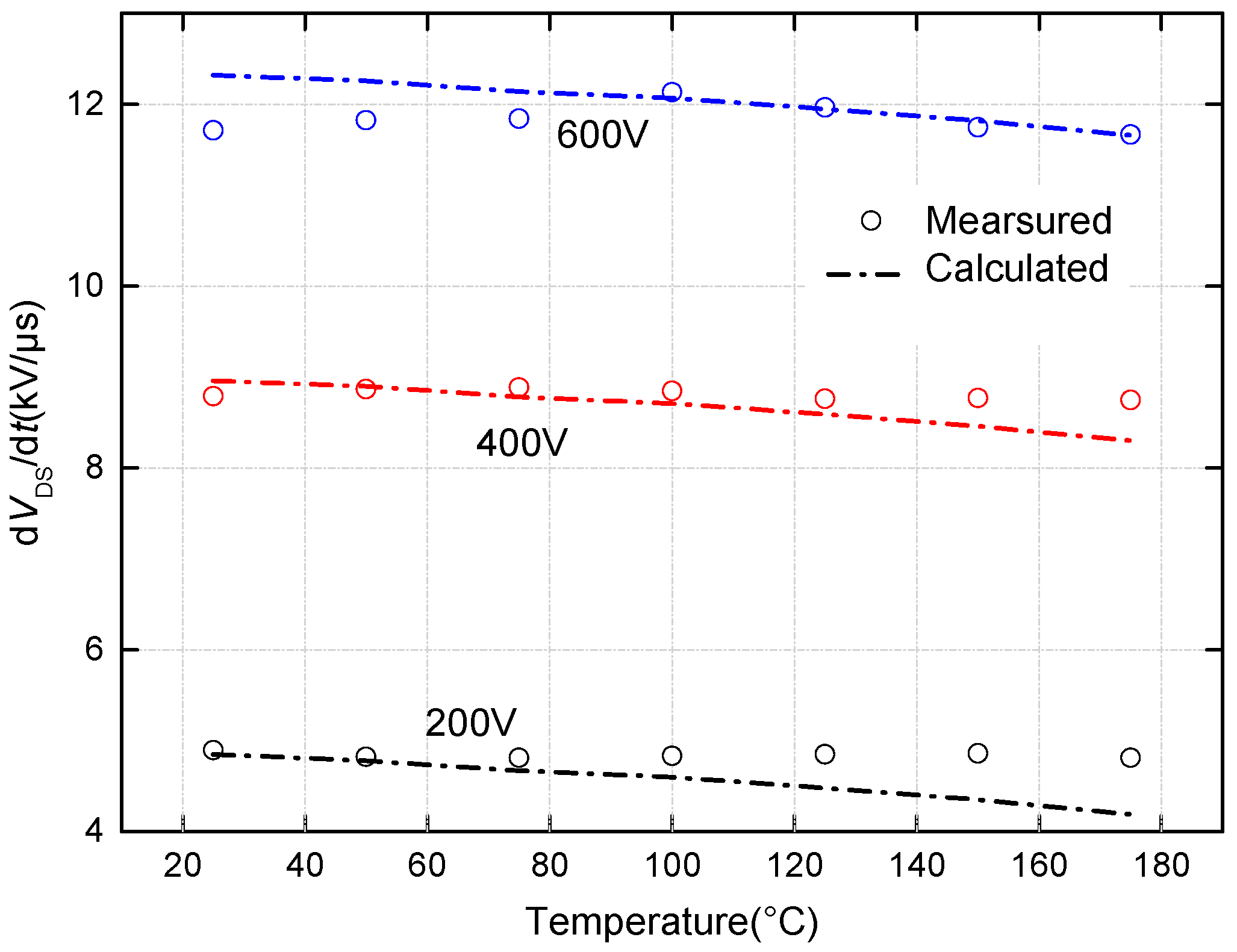

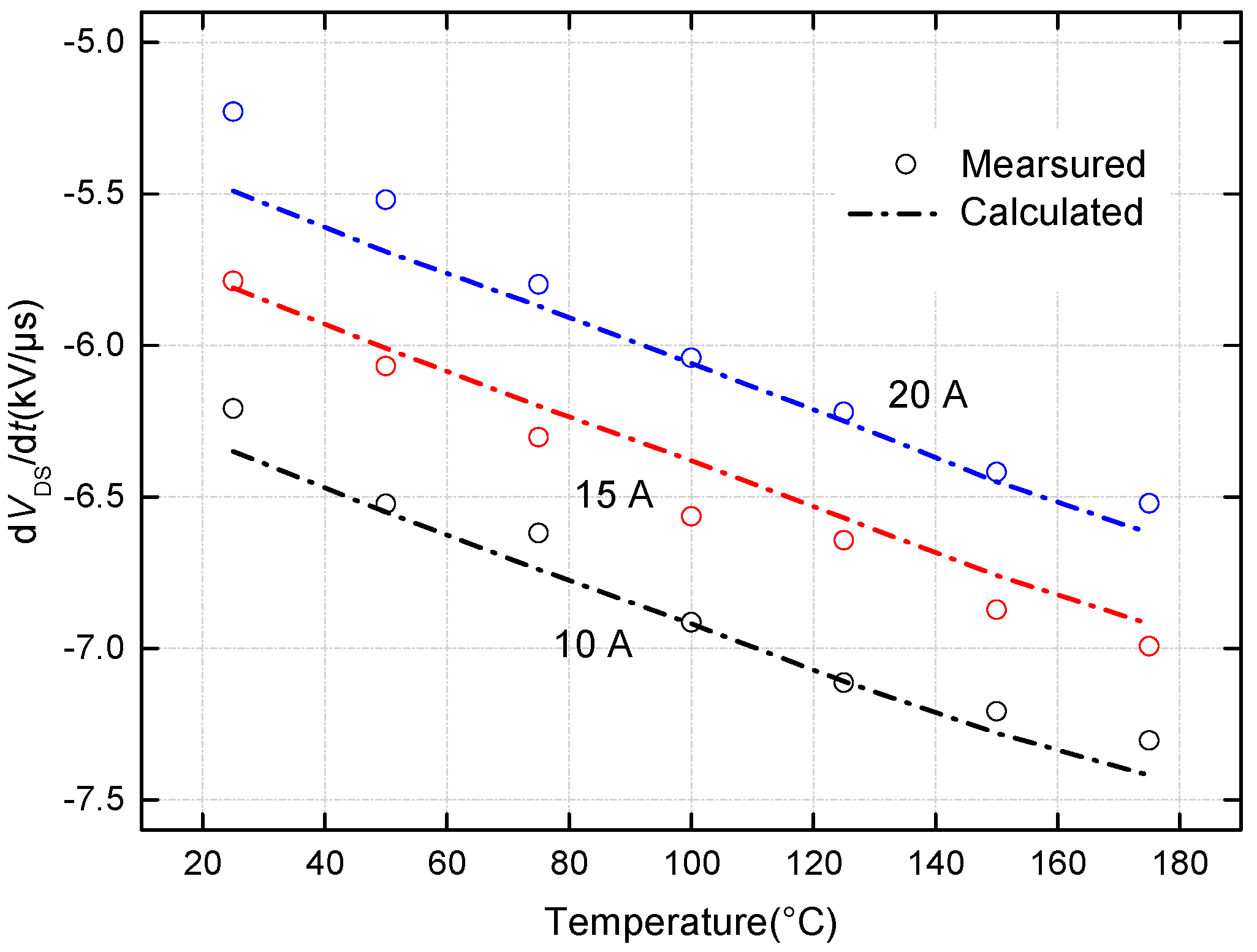


© 2017 by the authors. Licensee MDPI, Basel, Switzerland. This article is an open access article distributed under the terms and conditions of the Creative Commons Attribution (CC BY) license (http://creativecommons.org/licenses/by/4.0/).
Share and Cite
Li, H.; Liao, X.; Hu, Y.; Huang, Z.; Wang, K. Analysis of Voltage Variation in Silicon Carbide MOSFETs during Turn-On and Turn-Off. Energies 2017, 10, 1456. https://doi.org/10.3390/en10101456
Li H, Liao X, Hu Y, Huang Z, Wang K. Analysis of Voltage Variation in Silicon Carbide MOSFETs during Turn-On and Turn-Off. Energies. 2017; 10(10):1456. https://doi.org/10.3390/en10101456
Chicago/Turabian StyleLi, Hui, Xinglin Liao, Yaogang Hu, Zhangjian Huang, and Kun Wang. 2017. "Analysis of Voltage Variation in Silicon Carbide MOSFETs during Turn-On and Turn-Off" Energies 10, no. 10: 1456. https://doi.org/10.3390/en10101456



